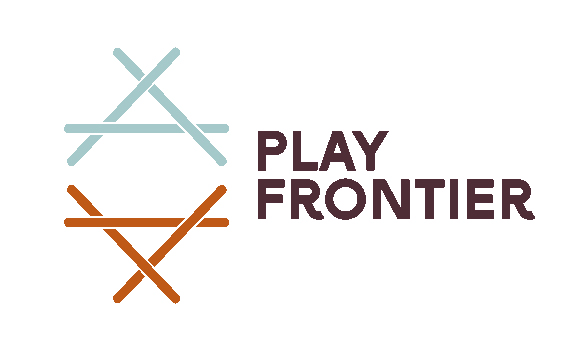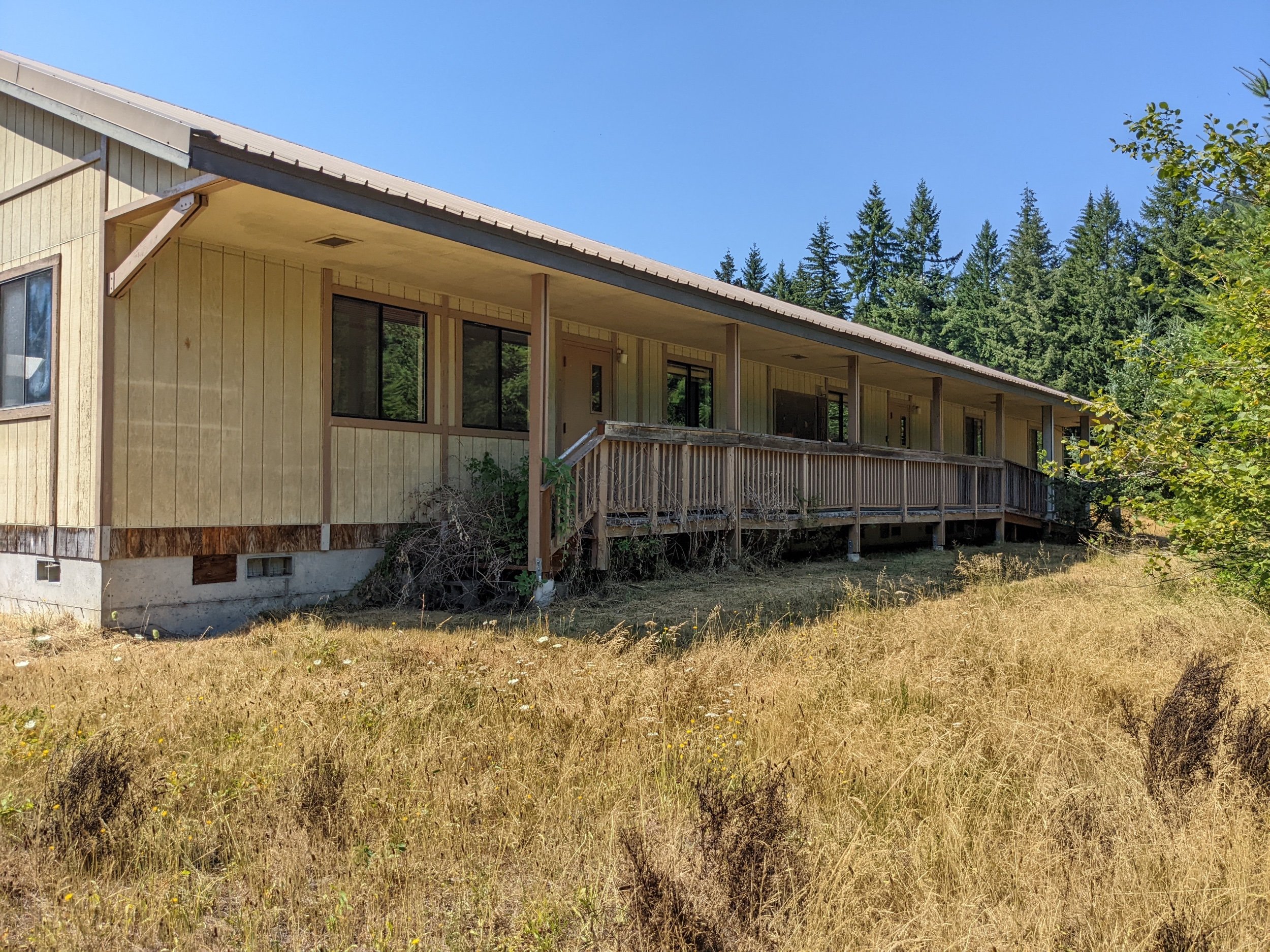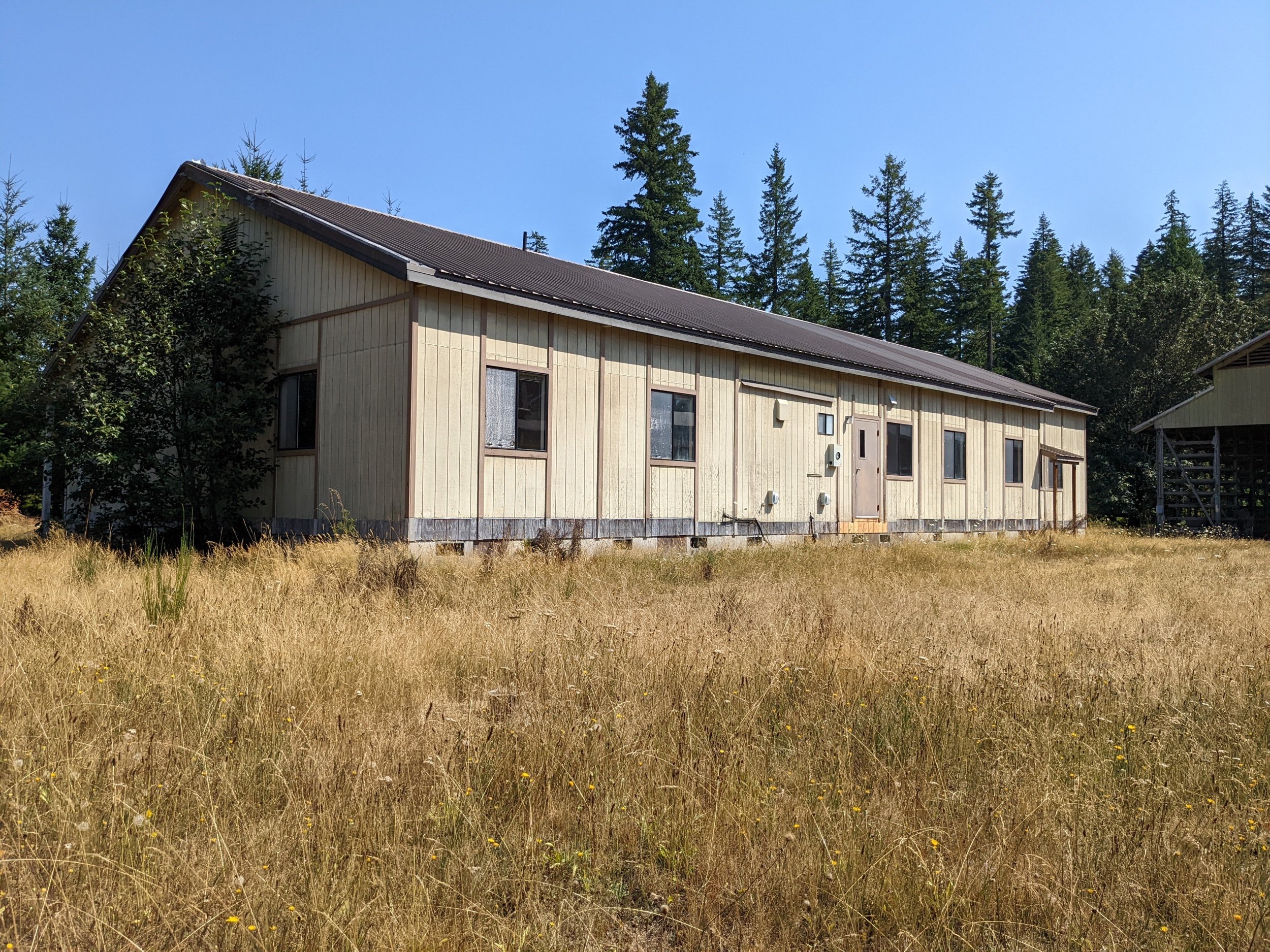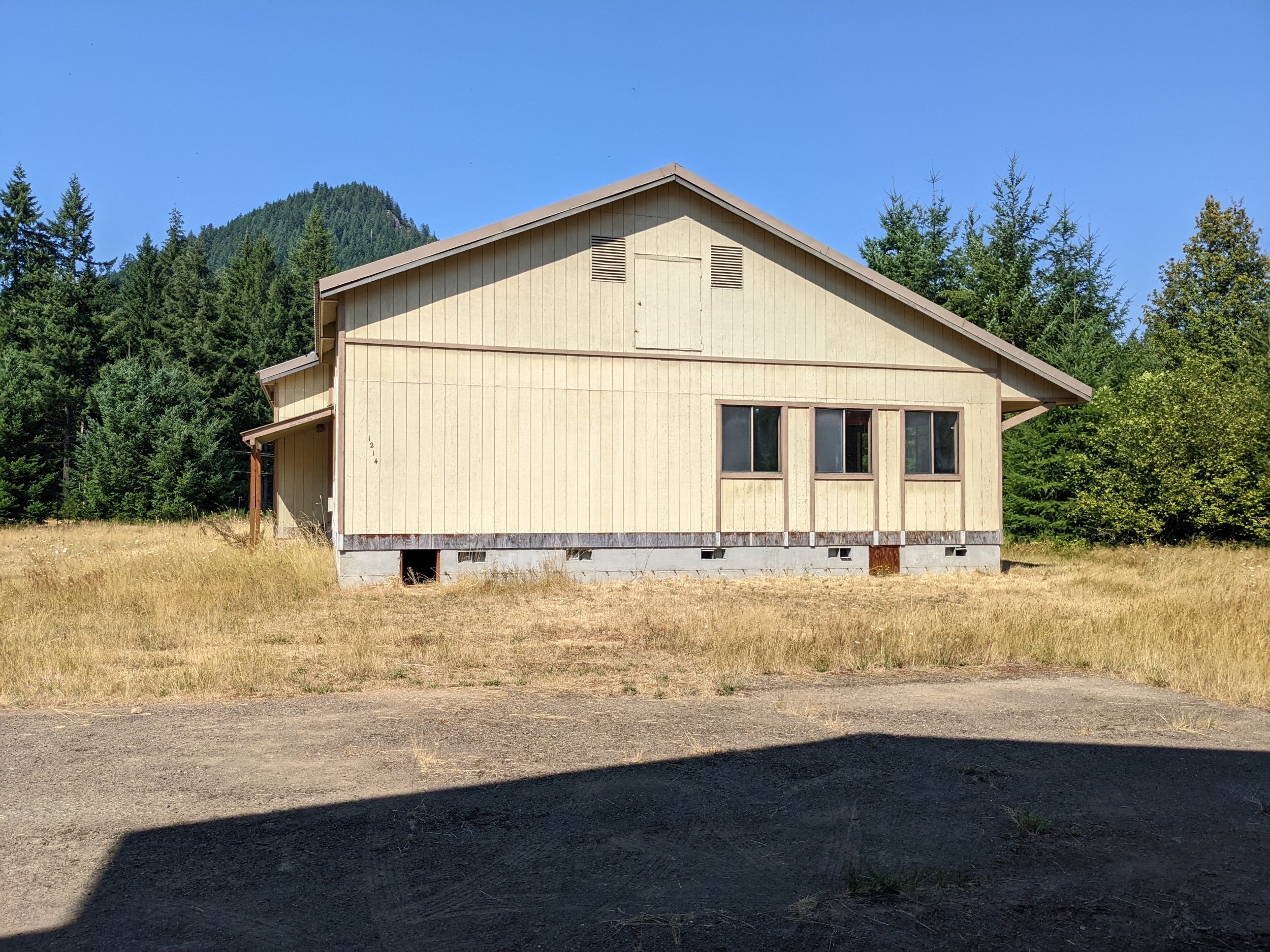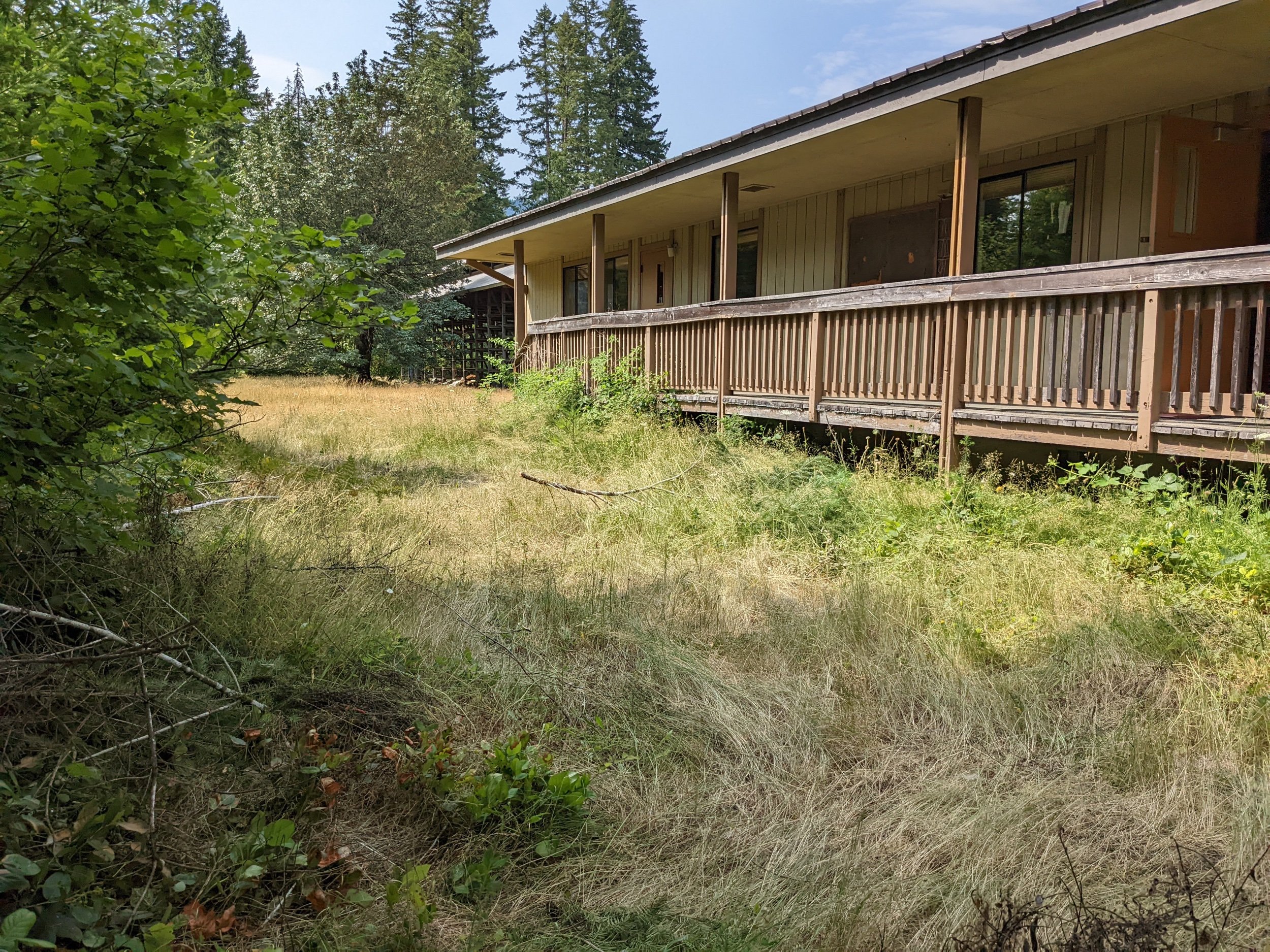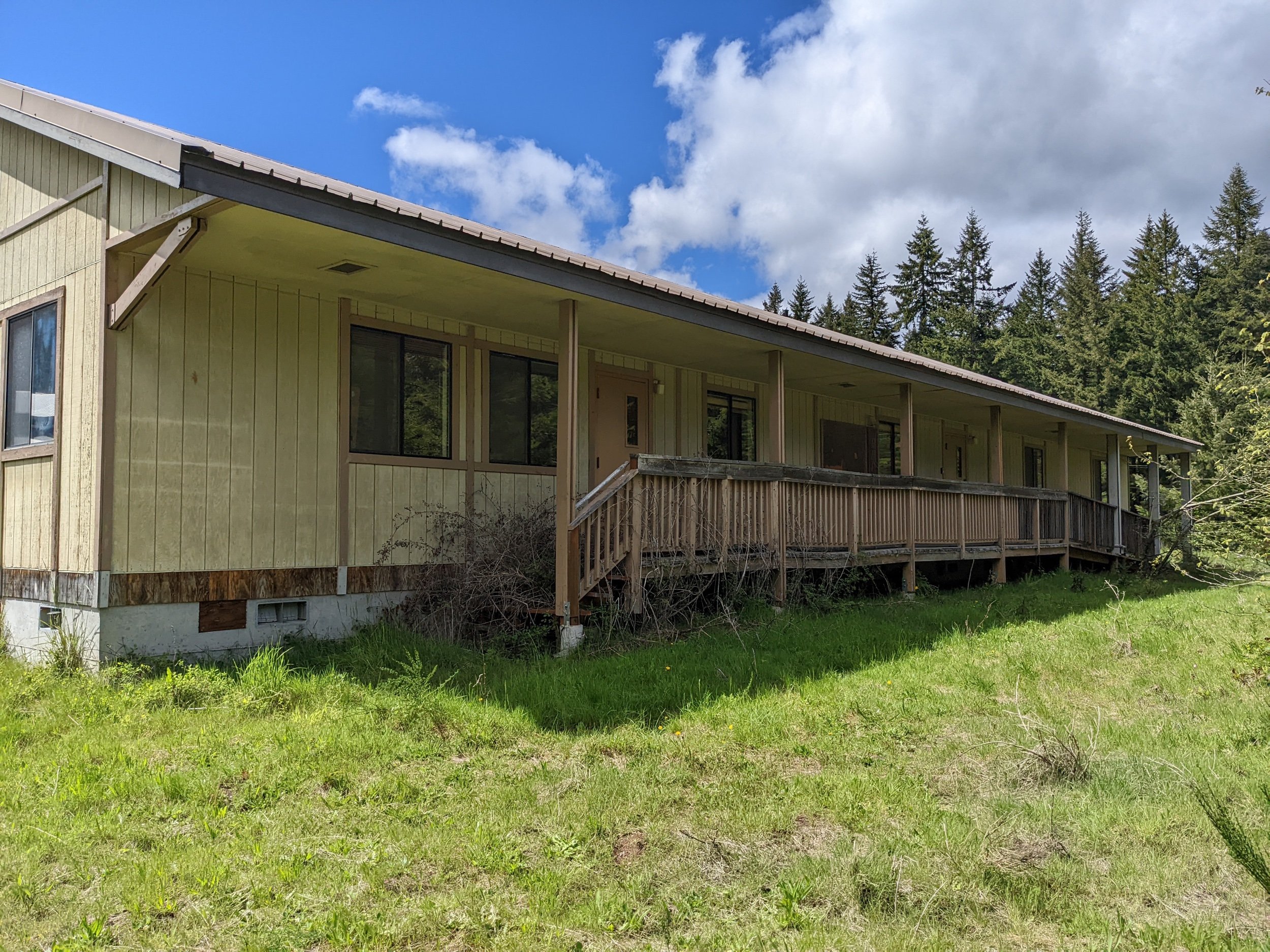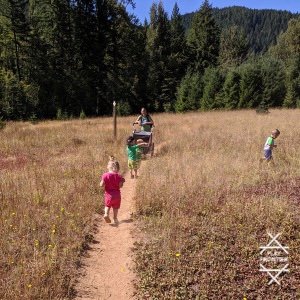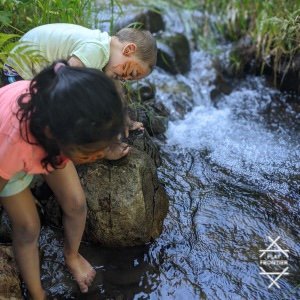Behind the scenes on our 0-5 fAcilitY
The first step in our multi-phase renovation of these two buildings at the historic Wind River Nursery is converting this building into a state-of-the-art 0-5 child care facility.
Currently known as the ‘eBay building’, this space was originally installed as an office at the Wind River Work Center of the US Forest Service, and bought off of eBay by the county for $1. The county laid a fresh foundation and moved the building, where it’s rested, unused, for 15 years. It’s never been hooked up to any utilities but has good bones!
Floor plAn sketches
The general layout, with a few furniture items added for scale:
The design goal for each classroom was that of a self-sustaining ‘mini home.’ Children and teachers spend up to 10 hours a day in this space, so we believe it should feel as close to home as possible. Cozy, livable, friendly, peaceful, joyous.
We’ve added some non-negotiable items to each classroom that, at first glance, may feel surprising. In addition to bathrooms and changing areas in every single classroom, appropriately sized for each age group, we have added what we are calling “Home Economics Labs.” Each lab will have a dishwasher, refrigerator, microwave, food prep sink, and a pantry for food and classroom storage. The goal of these mini kitchens is to fully integrate children of all ages in the incredible learning that happens around FOOD. Our youngest can sit in a high chair and watch, snacking on scraps, while their teacher models proper food safety and prepares a fruit salad. Our older preschoolers can learn how to cut and mix and measure. Our school age students can grow the food in the garden, clean, and plan meals together.
Here’s a rough sketch of one of the labs, inside the preschool classroom:
An important teaching aspect of typical home economics labs is that they are as close to a home environment as possible. The goal is not to replicate commercial kitchens, and cooking at large scale. The goal is to model and teach best practices in a way that students can then take that learning and apply it in their homes. Too often in center-based care environments, children are completely removed from this process. Teachers are then tasked with the job of artificially creating ‘learning activities’ that re-introduce skills better taught in a kitchen - think moving Pom-poms back and forth from bowls with tongs. Our question is, why artificially create that learning experience when we could simply have the children help pass out food with real tongs, and get the benefit of being a true community member and helper?
Why plan ‘sorting’ activities, when the children could be helping put real dishes back where they go on the shelf? Why create 1:1 correspondence math practice with stickers when we could be putting a spoon at each seat on the table? Our labs will make all of this possible without extra effort or planning on the teacher’s part, making life together in a classroom of young children not just easier, but filled with more care and more learning along the way.
Each classroom will also have direct access to the outdoors, making it easier (much much easier!) for classes to get outside whenever they need it most. No need for shared outdoor playground schedules, or extra supervision in hallways while we all line up to get mittens on. We will be able to simply open the door. Should anyone need the bathroom (which, working with children who are at all stages of potty training, is CRITICAL), we will have direct line of sight between playground and restrooms. The entire dance of our daily schedule will be simpler, easier, and leave more room for JOY for children and adults alike.
In-home feel, center bAsed CAre
Family child care providers have known the benefits of an in-classroom kitchen for a while now… think of all the messy art we can get up to if the clean-up is quick and accessible? How much more play dough will we make, how many more paint cups will we get out, if classroom teachers and children can access the clean-up? How much more empowered children will be to try new foods if they can witness and participate in the process?
Child care centers have long felt more institutional than their in-home counterparts. We strive to break this barrier, and prove that the resources of center-based care can be combined with the in-home vibes of family child care. And our self-sustaining classrooms are key.
